
KUALA LUMPUR, May 21 — We are a fickle creature, us humans.
Give us something simple and we clamour for something more complex. Offer us something complex and we long for simpler times. Our taste buds are not easily appeased.
Which is, honestly, a fortunate thing that we live in a country with such a wide variety of foods and cuisines. Affordable, delicious fare is available along nearly every street. (Which isn’t always the case in other countries.)
For there is a coffee shop or kopitiam at nearly every street corner. Stalls with different dishes for every day of the week: char kway teow or asam laksa, fish ball noodles or mee rebus.
One of my friends asked me recently what would I eat if I had to eat it for the rest of my life. My answer was swift and simple: mixed rice.
Also known as economy rice or nasi campur, this answer is a bit of a cheat since its very description entails every meal could come with different dishes or lauk-pauk.
But the point stands: we are blessed to live in a country where food choices are varied and abundant.
Still sometimes we crave something new. A new flavour or a new dish. Our palate insists, Excite us, please.
This is where a little creative mix and matching can come in and rescue the day.
No need to reinvent the wheel or learn a new recipe. Some of the most interesting meals and revelatory flavours can come from the unlikeliest of pairings.
First, ask yourself what are some of your favourite foods and ingredients. Or what you happen to always have on hand in your pantry or fridge. Then consider the possibilities.
This weekend what excites my palate is the thought of mixing and matching two of my favourite cuisines - Japanese and Thai. For the former, I always have a packet or two of shirataki noodles in my fridge; the latter is satisfied by some ready-to-use sachets of yellow curry paste in my pantry.
Sounds like a strange combination, no? Yet some of the most delectable dishes I have tasted are odd couple pairings.
Who would have thought sandwiching a fried breaded cutlet between two slices of fluffy milk bread would work? Yet the katsusando is now a ubiquitous konbini staple, perfect for summer picnics.
Or that sweet, ripe mangoes would go so well with some warm glutinous rice, suffused with creamy coconut milk? Is it any wonder khao niaow ma muang (or mango sticky rice) is one of my favourite desserts?
Sometimes it’s textural contrasts (soft bread and crusty cutlet) and sometimes it’s opposing flavours (sweet and savoury). Sometimes it’s realising there is nothing antagonistic about such mixing and matching, not if you revel in the end results.
We are a fickle creature, us humans. Yet we are ingenious enough to satisfy our own hunger and hankering. Try some of these shirataki noodles in yellow curry, and I’m sure you will agree.
SHIRATAKI NOODLES IN YELLOW CURRY
It all begins with the yellow curry as the base. And to make the yellow curry, you will need a yellow curry paste. You could make it from scratch... or just get a convenient packet of yellow curry paste.
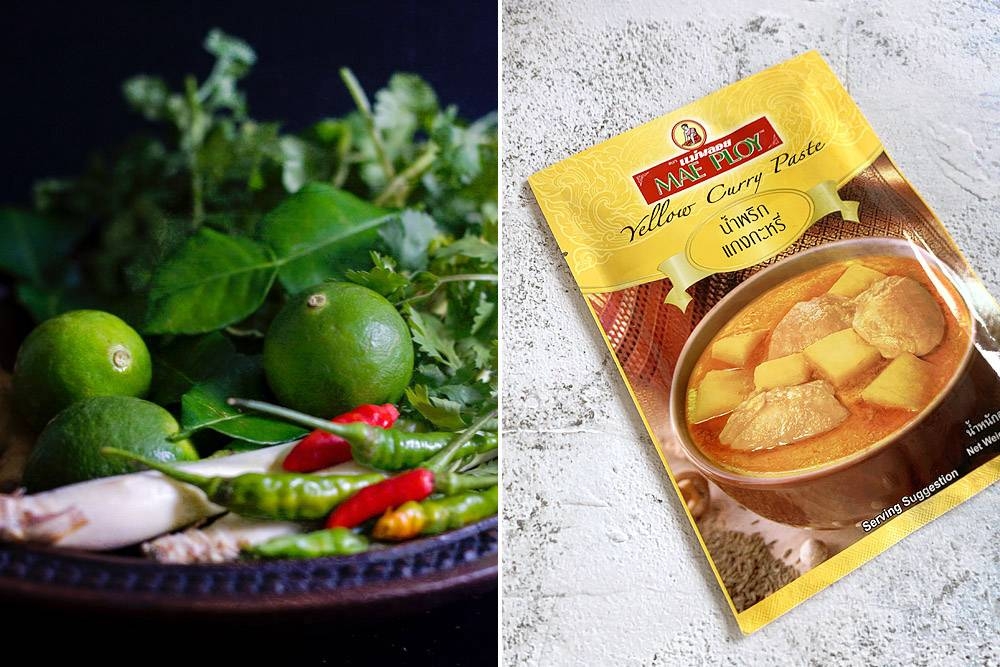
That’s what I would do; mixing and matching isn’t about authenticity, after all, but finding new ways to enjoy old favourites.
Available from most supermarkets or Thai specialty grocers, a commercial yellow curry paste will provide you with all the aromatic notes of cumin and coriander, turmeric and fenugreek - without all the pounding and mashing.
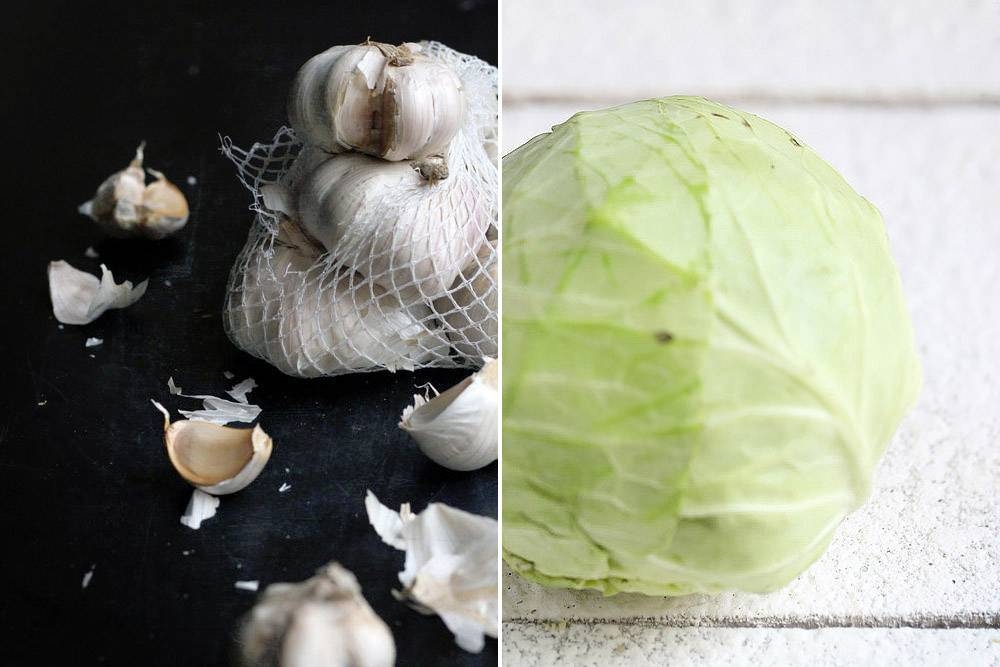
Of course some fresh aromatics are still required. For this dish, sautéing some cloves of raw garlic will imbue the yellow curry with an irresistible perfume.
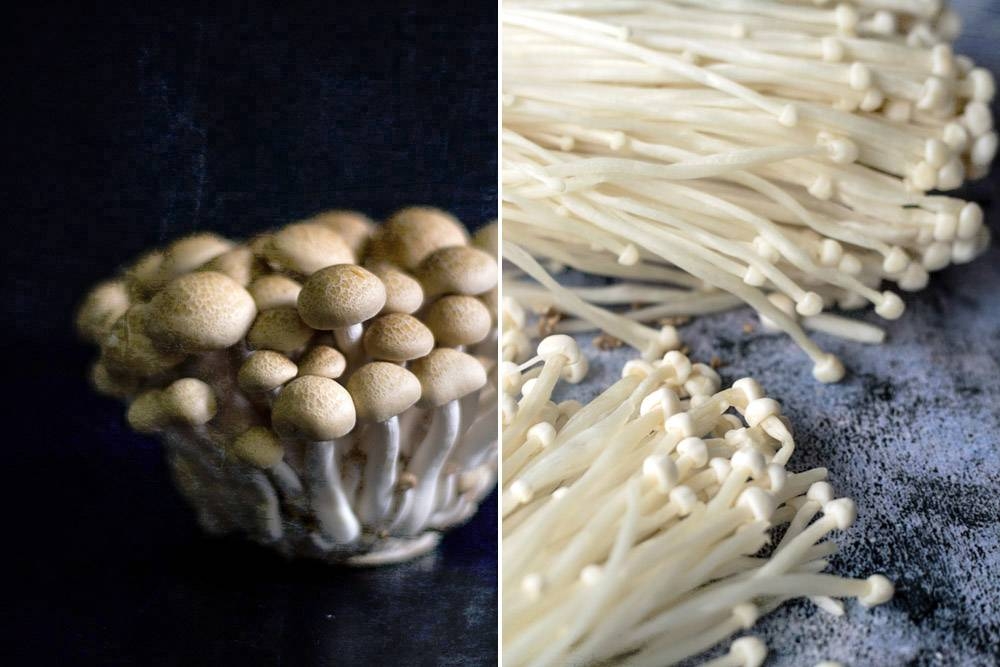
For the body of the curry, some cabbage to bulk up the dish and a variety of mushrooms to make things interesting, in terms of both taste and texture.
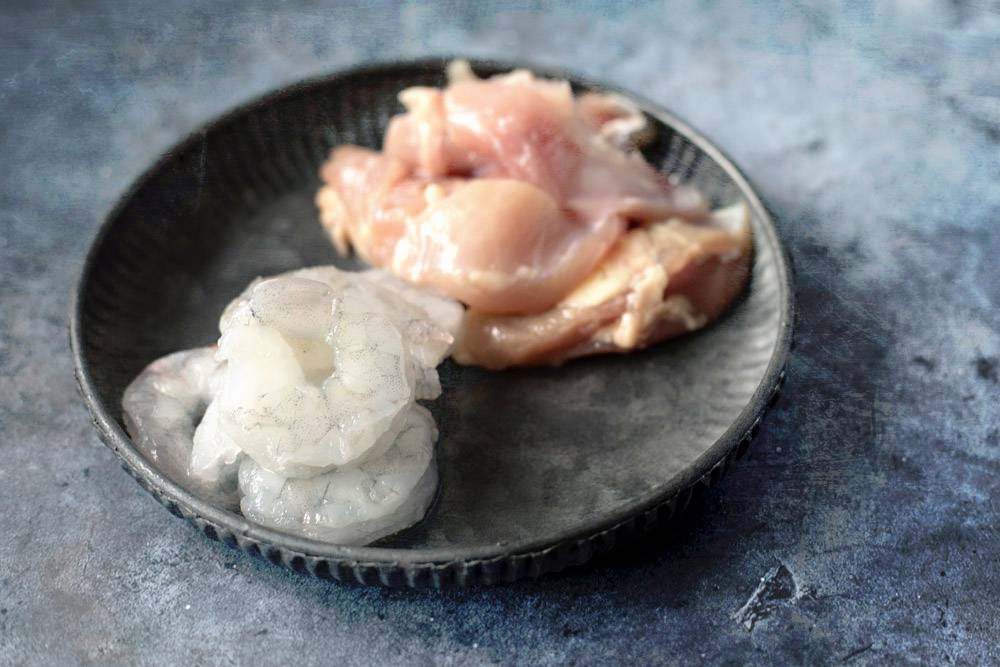
We’ll need some protein too. Two great choices that go well with yellow curry are seafood and chicken. Here I have used prawns for the seafood portion but sometimes I add squid and fish if I have those handy in the fridge too.
The last ingredient to go into the pot would be the shirataki noodles. These gelatinous noodles are made from konjac yam, which contains glucomannan, a type of soluble fibre. This means shirataki noodles are considered a zero or low calorie ingredient, favoured by health enthusiasts.
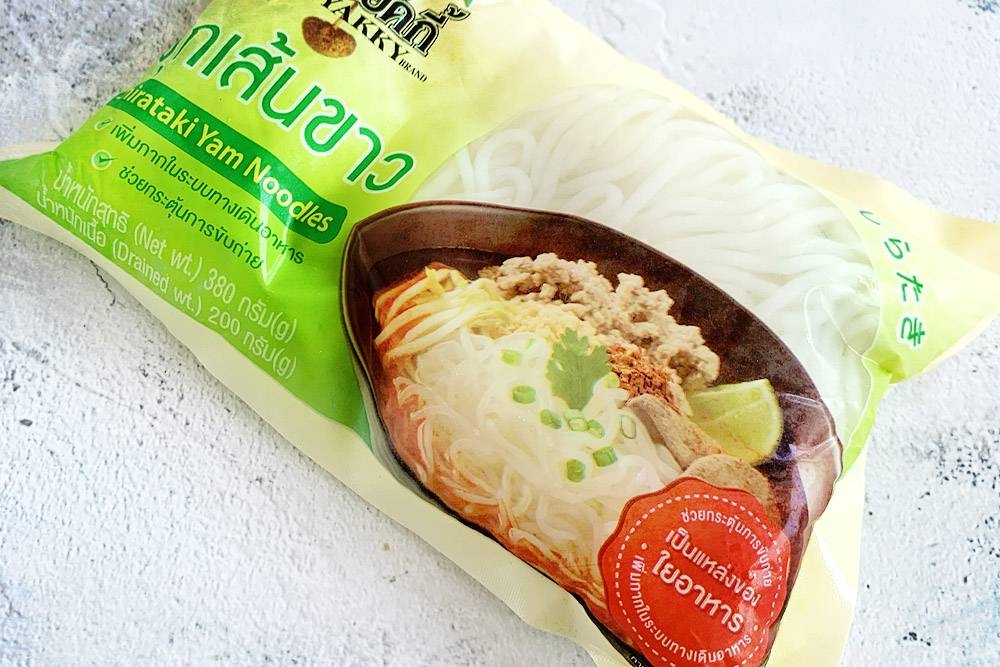
However, you could just as easily plate the noodles and pour the curry over it. Shirataki noodles are bland and can soak up the flavours of the yellow curry, which is milder than other curries though still spicy.
Ingredients
1-2 tablespoons neutral cooking oil
80g yellow curry paste
3-4 cloves garlic, minced
500ml coconut milk
¼ medium cabbage, sliced
100g mixed mushrooms, sliced
100g boneless chicken thigh, sliced into cubes
10-12 medium sized prawns, shelled and deveined
1 teaspoon fish sauce
Sugar, to taste (optional)
1 packet shirataki noodles
1 teaspoon sesame oil
Method
Heat oil in a pan over medium-high heat. Once the oil is hot, reduce to medium heat and add the yellow curry paste. Sauté for about a couple of minutes before adding the minced garlic.
Continue to sauté the curry paste and garlic until aromatic. Now you can add coconut milk, cabbage and mushrooms. Bring to a boil before lowering the heat and allow to simmer for 15-20 minutes or until the cabbage has softened.
Time to add the protein. First add the chicken. Once the chicken has begun to turn white (but isn’t fully cooked yet), add the prawns too. Continue to stir until the prawns have begun turning pink and the chicken is fully cooked.
Before turning the heat off, taste and adjust the seasoning with fish sauce and some sugar, if necessary.
While the curry is simmering, drain the packet of shirataki noodles of its packing liquid. Using a large sieve, continue rinsing the noodles under running water until there is no residue of the packing liquid.
Pan-fry the rinsed noodles in a dry non-stick pan for about 5-8 minutes over a medium heat. Toss the noodles regularly using chopsticks or a pair of heat-proof tongs to prevent them from clumping together.
Once most of the moisture has been cooked away, transfer the noodles to a large bowl and mix with sesame oil to ensure the noodles don’t dry out.
Once the curry is ready, either add the shirataki noodles to the pot before serving or transfer the noodles to individual plates and ladle the curry over it. Serve immediately while hot.
For more Weekend Kitchen and other slice-of-life stories, visit lifeforbeginners.com.






















